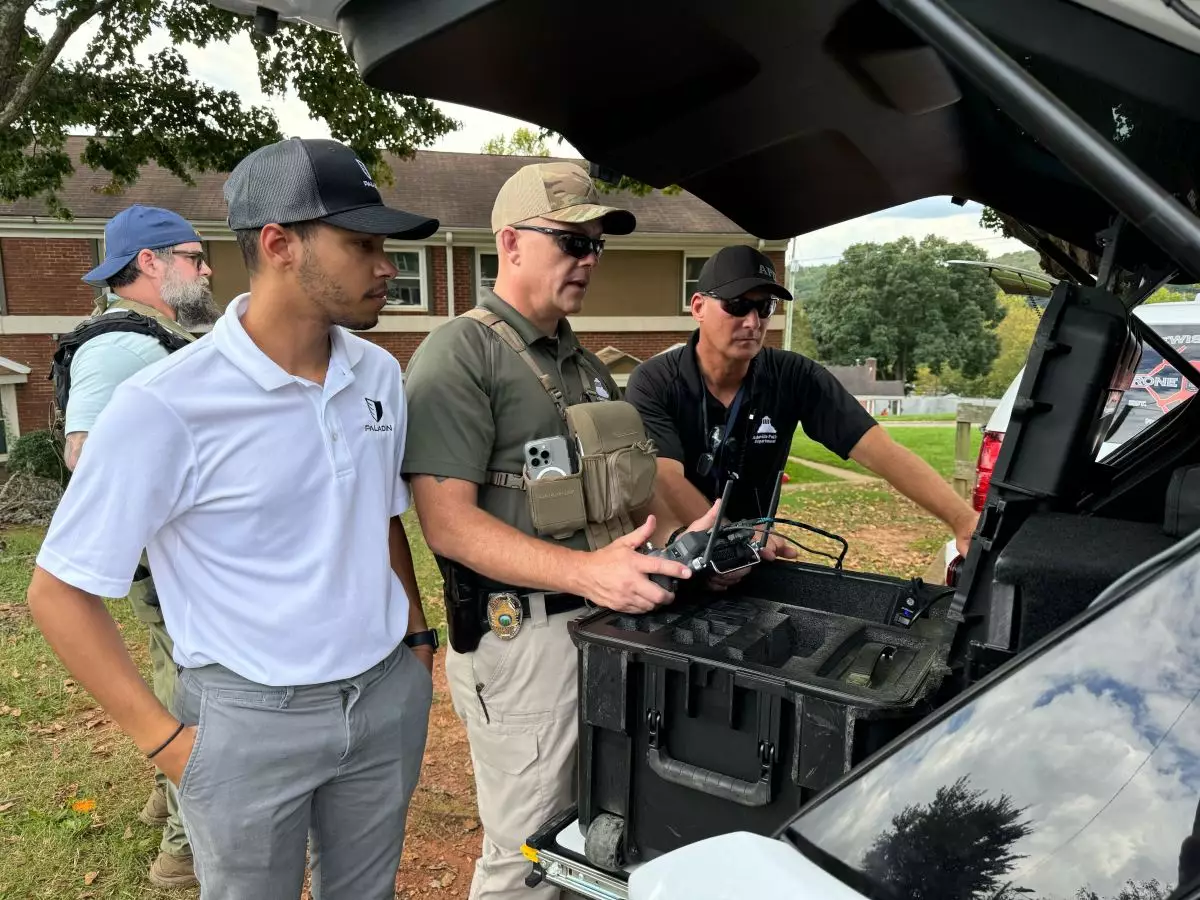In an age where technological advancements propel numerous fields forward, the realm of public safety is not lagging behind. The recent intervention of Paladin, a drone technology startup, during the aftermath of Hurricane Helene in Asheville, North Carolina, underscores the transformative potential of integrating drone technology into emergency response systems. Founded by Divy Shrivastava, Paladin is pioneering a shift in how first responders can address crises, offering solutions that enhance situational awareness and expedite resource deployment in emergencies. This case illustrates not only the immediate benefits of drone-assisted operations but also the implications for the future of public safety.
When Hurricane Helene wreaked havoc in Asheville, the local police department required assistance in a rapidly deteriorating situation marked by impassable roads and disrupted communications. Paladin’s 30-member team sprang into action, primarily leveraging its innovative software that permits remote control of drones from its Houston headquarters. This capability allowed them to provide crucial support, bridging the gap created by the hurricane’s destruction. As Shrivastava stated, the swift actions taken by his team epitomize what the future of the drone industry could resemble—responsive, effective, and adaptable to real-world challenges.
The flexibility of Paladin’s technology is particularly noteworthy. Equipped to customize drone capabilities to suit a range of needs, the company effectively responded to the situation in Asheville, delivering essential supplies and locating individuals in distress. This immediacy highlights a key merit of drone technology: its ability to transcend traditional barriers, such as closed roadways and communication breakdowns.
Every remarkable innovation often carries a personal story, and Shrivastava’s journey is no exception. His formative experience of witnessing a house burn down while waiting for emergency response teams instilled in him a sense of urgency to modernize public safety infrastructure. His commitment to reducing response times and enhancing situational awareness became the wind beneath Paladin’s wings. This adherence to personal experience as an impetus for innovation reminds us of the human element behind the technology.
Shrivastava’s extensive background—stemming from concept development during his college years to participation in the Thiel Fellowship—exemplifies a fusion of dedication and strategic thinking. His resolve to create a drone system capable of addressing slow response times highlights a broader need across many communities, particularly in rural areas where resources are limited but emergencies still occur.
Paladin’s operational model is strikingly efficient, allowing drones to be deployed within a mere 90 seconds of a 911 call being received. This rapid response could be a game-changer in scenarios where every second counts, as it provides the public safety department with immediate situational insights. For every delay in response, the stakes grow higher—the potential for loss of life, property, or safety weighs heavily on first responders.
Moreover, Paladin’s technology addresses another crucial facet of emergency response: managing false alarms. An impressive statistic indicates that the startup’s solutions can help clear 10-25% of unnecessary calls, optimizing the allocation of law enforcement resources. This is especially beneficial given that many police departments operate with skeleton crews, frequently dealing with overwhelming workloads. Such technology not only enhances efficiency but also safeguards officers’ time and resources, ensuring they can focus on actual emergencies.
Despite the enthusiasm surrounding technological advancements in public safety, some concerns emerge regarding the misuse of drones, particularly regarding surveillance. Shrivastava acknowledges these apprehensions, emphasizing that Paladin’s software is explicitly designed to respond only to 911 calls and complies with regulations across all 50 states. The company ensures that drones operate ethically, activating their cameras solely upon reaching the emergency site. This commitment to responsible usage is pivotal in garnering public trust and ensuring lawful operations.
The growing interest in utilizing innovative technologies for public safety also positions startups like Paladin at the forefront of a burgeoning market. With numerous public safety departments expressing a keen demand for such solutions, Paladin is set to capitalize on this trend. Recent funding successes, including a notable $5.2 million seed round, dignify its trajectory towards enhancing drone capabilities even further.
Competing with other tech firms like Prepared, which is developing complementary video technology for 911 dispatchers, signifies a collective market enthusiasm for addressing the challenge of modern emergency response. The convergence of funding, innovative technology, and increasing demand validates that the industry is ripe for transformation.
The integration of drone technology into public safety systems embodies a paradigm shift that stands to redefine emergency responses. As illustrated by the initiatives of Paladin during Hurricane Helene, drones provide critical support to first responders, enhance operational efficiency, and lay the groundwork for future advancements. With a dedicated focus on responsible use and ethical operation, these technologies promise to usher in a new era of public safety—one where lives can be saved, time can be optimized, and hopes can be renewed amid crises. The future appears bright, especially as innovators like Paladin continue to push the boundaries of what is possible in emergency management.

